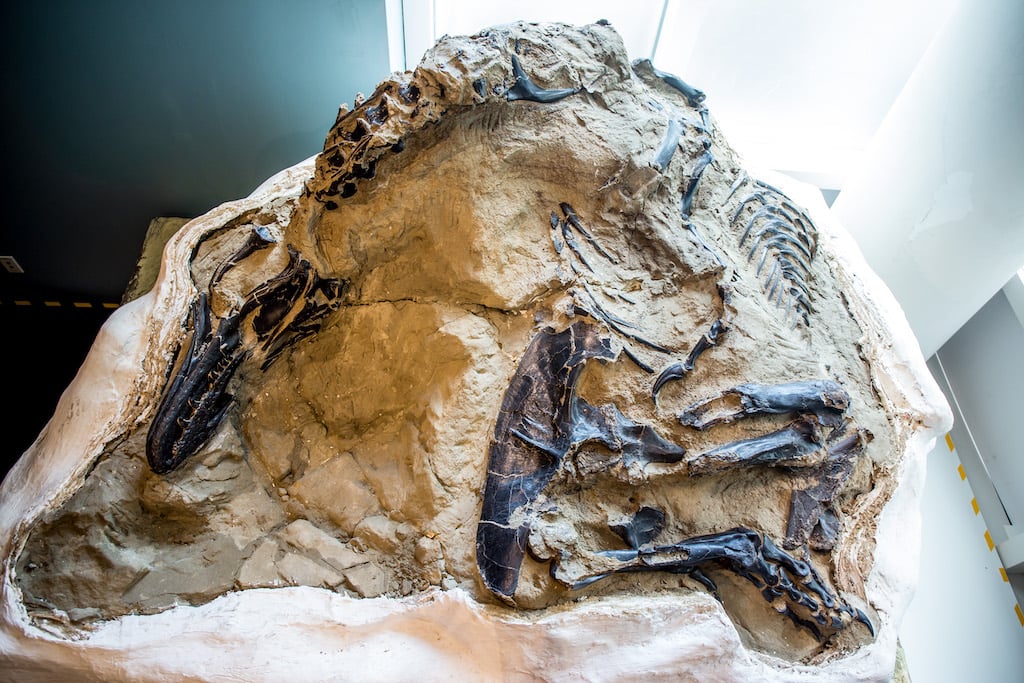
Over the years, researchers have found ample evidence proving that the horned Triceratops and the Tyrannosaurus Rex (T. rex), which roamed western North America in the late Cretaceous period — some 69 million years ago — were mortal enemies. However, finding perfectly-preserved fossils of the prey and predator locked in combat was something they only dreamed of until the 2006 discovery of the "Dueling Dinosaurs" at a private Montana farm by commercial fossil hunters Clayton Phipps and his team.
"The "Dueling Dinosaurs" is one of the most remarkable fossil discoveries ever made," Scott Sampson, a paleontologist and the president of Science World, a nonprofit education and research facility in Vancouver, BC, told Smithsonian in 2017. "It is the closest thing I have ever seen to large-scale fighting dinosaurs. If it is what we think it is, it’s ancient behavior caught in the fossil record. We’ve been digging for over 100 years in the Americas, and no one’s found a specimen quite like this one."
Surprisingly, the intertwined creatures. thought to be the best-preserved skeletons of Triceratops and T. rex unearthed to date — and the only 100 percent complete skeleton of T. rex yet discovered— were not well-received by American museums and research institutions. Some researchers believed they were scientifically useless, while others were upset they were being sold by for-profit collectors. After failing to sell the fossil even in a private auction, Phipps locked it up in storage, where it remained for a decade.
In 2016, Lindsay Zanno, a paleontologist at North Carolina State University and the head of paleontology at the North Carolina Museum of Natural Sciences, offered to buy the fossil from Phipps for $5 million. However, the transaction could not be completed due to a legal battle about the fossil's ownership between the current and previous owners of the Montana farm where it had been found. The matter was finally decided by courts in May 2020. On November 17, 2020, the North Carolina Museum of Natural Sciences officials announced that the world's most famous dinosaurs would finally be available for research and public viewing.

The museum's scientists believe the carcasses, which are still entombed in the Montana hillside's sediment with each bone in its original position, will provide access to biological data not available in normal fossil finds, where the remains are scattered. The rare burial conditions, which preserved features such as skin impressions and possibly even the remains of soft tissues and stomach contents, will reveal unprecedented insights into the cretaceous residents' lives. Even more exciting is that the "Dueling Dinosaurs" will be housed in a new, hi-tech exhibit that will allow visitors to see the fossils up-close and talk to paleontologists as they meticulously uncover their secrets.
“The Museum is thrilled to have the unique opportunity to house and research one of the most important paleontological discoveries of our time,” said Dr. Eric Dorfman, director and CEO of the North Carolina Museum of Natural Sciences. “Not only are we able to uncover unknown details of these animals’ anatomy and behavior, but our new dedicated facility and educational programs will allow us to engage with audiences locally, across North Carolina, and worldwide."
Resources: naturalscience.org, nationalgeographic.com, inmashable.com
